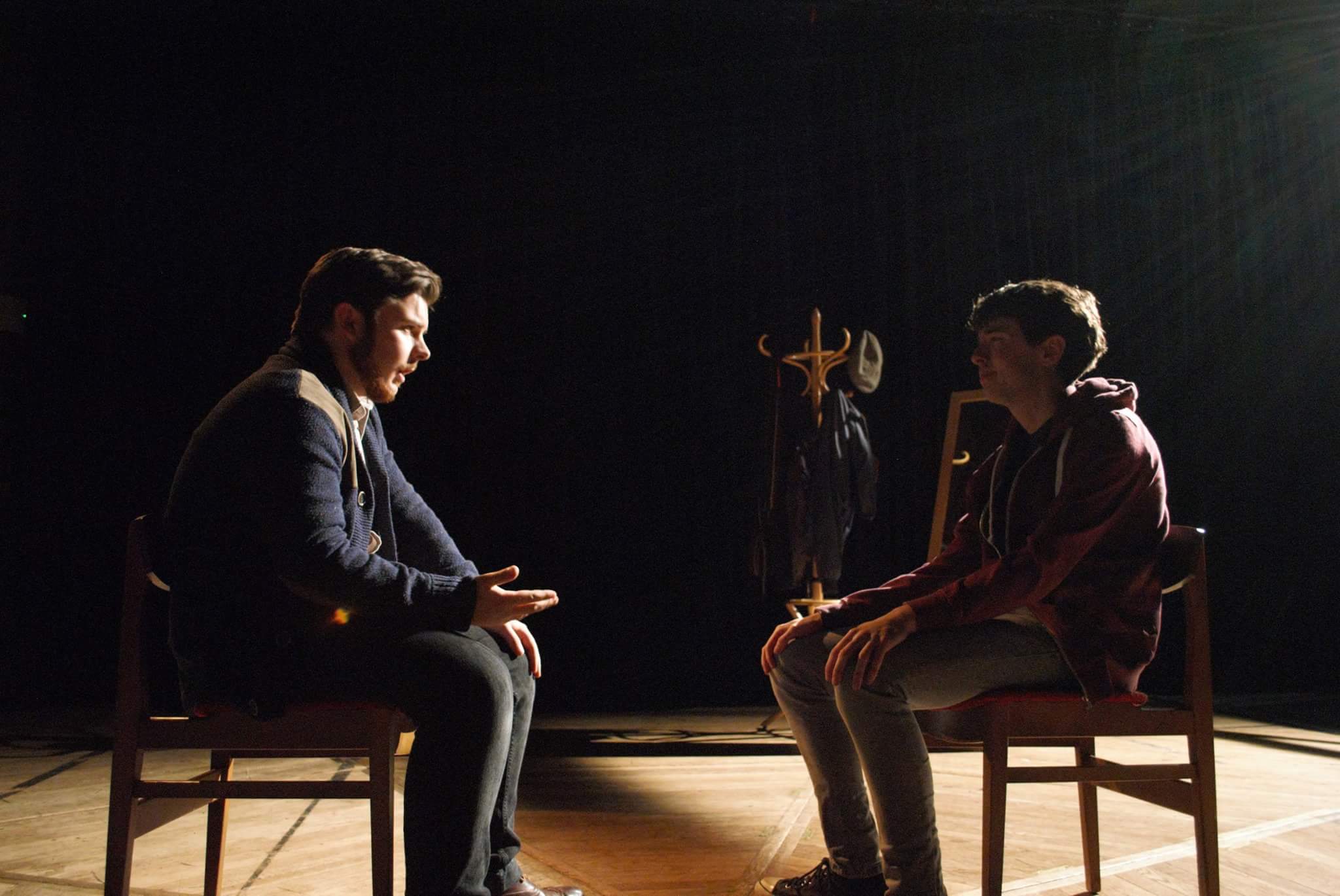Identity politics is a pertinent issue in today’s society, and A Number exposes the struggle of defining identity in a categorically saturated world. In a futuristic narrative where cloning is available for the human race, Bernard – Salter’s son – realises that he is one of an unknown number of clones. The plotline follows this father-son(s) relationship as they try to uncover the cause and current situation of the other clones. From within the Debating Chamber at Falmer, the Sussex University Drama Society (SUDS) introduces us to Caryl Churchill’s futurist play: A Number.
Four rows of chairs surrounded the stage, which was circle-framed by a sharp light. Within the lit stage were two actors: Tom Chown (playing the Bernards) and Jack Devonshire (as Salter). Accompanying them was a set of two chairs, a hanger with clothes, and a mirror – a minimal set up that juxtaposed with the abundance of clones on stage. Already in character whilst the audience were settling into their seats, Tom was caught on a repetitive sequence of clothing changes – hinting at the multiple personas he would be enacting that evening. Like the stage, the narrative was a circular one as each Bernard clone – although different in nature – had similar father-son conversation topics.
The show was conceptually well thought out; even with the limitations that a student-run production entails, the SUDS team achieved a professional and effective interpretation of Churchill’s contemporary play. Booking the Debating Chamber and dimming the lights to create a small space in which the audience is fixated on the actors was genius. To follow this, the movement between each scene change was faultless. By turning off the lights for dramatic effect, and playing a futuristic soundtrack until the actors were ready to continue, the scene change was experimental and successful.
In retrospect, I would have liked to see Tom’s impersonations of each clone to diverge from each other through subtle changes of mannerisms. Although, the crouched back was powerful for giving the audience a clue of his eerie personality, I would have liked to see slight differences – not exaggerated ones – to embody complete different identities for each clone.
These actors encompassed a spectacular performance and surpassed all limiting factors that they faced. From Tom having to learn the script in a week due to actor drop-out, budget limitations due to being a student-run production and picking a challenging play that has fast-paced dialogue interactions between two actors – the production was an impressive one to watch.
Image Credit: Kaya Brown



